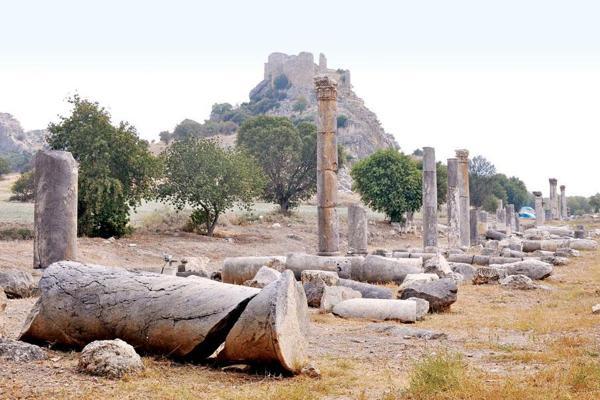Findings push back history of ancient city of Kastabala
OSMANİYE – Demirören News Agency


The ancient city of Kastabala in the southern province of Osmaniye’s Cevdetiye district is 1,500 years older than previously thought, archaeologists working at the excavations have found, making the history of the site date back 3,500 years.
The ancient site was built on three layers and not on two layers as previously thought, said the head of the excavations, Black Sea Technical University (KTU) academic Professor Turgut Hacı Zeyrek.
He said the findings pushed back the history of the ancient settlement. “We believed that the ancient city was 2,000 years old until the excavations started. But now it goes back 1,500 years more years. Now we know that Kastabala was settled 3,500 years ago.”
Zeyrek said works had been ongoing in the excavation field, stressing that they mostly focused on the city’s protection.
“Our priority here is the protection of the columned street. The street has three structural periods. When we revive the street, our experts will decide on which period will be revealed. We currently see the Middle Age period. There is the 5th-century period three meters deep. And there is also the Roman period seven to eight meters deep. Our works reveal that the columned street had three different ground floors from the three different periods,” he added.
The ancient city of Kastabala was a central city with its architecture, sacred spaces, bazaar and the columned street, Zeyrek said, adding that lots of structural pieces here could be seen in the buildings in the villages around.
He said a piece of a coffin in the ancient city was used on the door of a primary school in Bahçe village.
“We have strolled around the nearby villages. Some removable blocks are seen in the gardens of houses in Bahçe, Kazmaca and Kesmeburun villages. We don’t know if the piece of the coffin was used deliberately or not. There are also column headings in the garden of the former building of the Osmaniye Governor’s Office. It is said that these headings might belong to the columned street in Kastabala,” he said.
Kastabala should be tourist attraction
Tourists have not been visiting the ancient city recently, Zeyrek said. “Tourism should be revived here. Otherwise, what we do here has no meaning. Visitors mean income and this income is important for the sustainability of the project,” he added.
“The ancient city of Kastabala is located amid the Bahçe, Kazmaca and Kesmeburun villages within the borders of Cevdetiye. The architectural structures which we see on the coasts of the Aegean and the Mediterranean are seen here, too. Especially the columned streets identify a city’s plan. The columned streets start at the entrance of the city and end with a monumental structure. We found a temple in 2009. The existence of a theater, bath and religious structures prove that this city was central. The inscriptions we have found are from pedestals. The understructure was developed here, there was both clean and dirty water systems. We found it when examining the columns on the street,” Zeyrek said.
